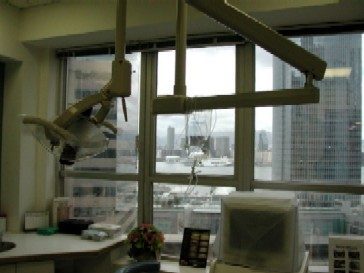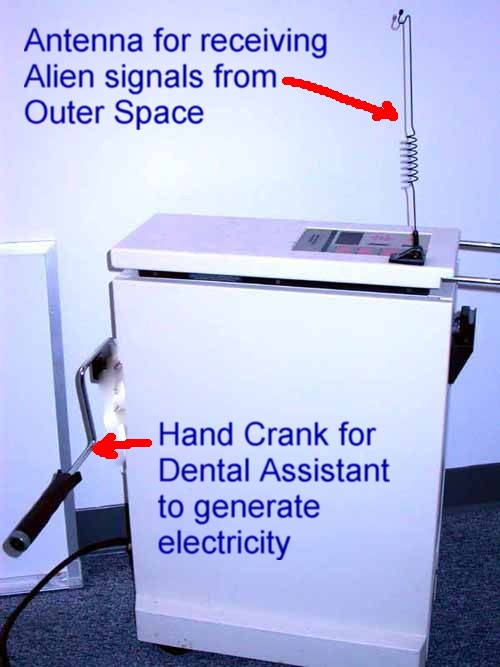Forum Replies Created
-
AuthorPosts
-
Kenneth LukSpectatorhi Andrew,
Yes, I use the Ultradent canula tip.
Ken
ASISpectatorHi Ken,
Do you not find that the water tends to have trouble flowing out the tip of the canula? Perhaps I haven’t adjusted the flow correctly?
Andrew
SwpmnSpectatorDon:
Thanks so much for your two cents on diodes. The discussion on uses for activated vs. non-activated tips was most useful – a list of suggested procedures for each tip mode would be great. If I’ve done some ablating, and got a lot of hemorrhage, would there be a benefit to re-cleaving the fiber so that it would now be “un-initiated” and give me deeper penetration and thus better hemostasis?
From what you said, seems like good ways to dissipate heat with the diode in CW mode would be to move quickly/not stay in one place too long and/or spray a little water on the tissue to cool it down.
Thanks,
Al
SwpmnSpectatorYou won’t be charged for the fiber or handpiece.
The fiber is sensitive to water left within from previous procedures(could have been left in from practicing on extracted teeth). You must purge water from the fiber after each use. If you aren’t sure how I can give you step by step instructions.
The book by Chris Walinski is quite good.
Al
Kenneth LukSpectatorHi Andrew,
Yes, there were problems.
After speaking to Joe Mooney, the engineer, here’s what I’m doing now:
If you use the water from the unit , the flow is too much and there’s leakage at the middle and the end of the handpiece. To avoid leakage, give it some torque when tightening the handpiece.Also not keen on using water from the unit.I would prefer to use sterile saline pack for irrigation.
Joe made me this connection to the saline pack.The pack is tided to the arm of the ceiling light mount. The flow is controlled by a valve at either end of the tubing.
Size 20 ultradent gauge used on 360 fiber.I did 8 quadrants of laser curretage with SRP , troughing
on two crown preps today. Almost finished the saline pack. Once the pack is opened, we discard it in one week BUT we always managed to finish the pack within the time.Photos attached. Thought I’d show you the harbour view of HongKong from my office.
Saline pack connection.
size 20 canula with 360 fiber.
Hope this is useful for you.
You can contact Joe at Biolitec.Ken

 3.jpg)
(Edited by Kenneth Luk at 11:37 am on June 23, 2003)

(Edited by Kenneth Luk at 11:47 am on June 23, 2003)
(Edited by Kenneth Luk at 8:41 pm on June 23, 2003)
vinceSpectatorGreetings,
I have read that laser therapy is helpful for apthous ulcers and cold sores. What about traumatic ulcers such as from dentures? Has anyone tried it? With the 980: parameters?
The booklet says that you should not submit ‘dry bone’ to the laser…why?…not enough absorption? too much depth of penetration? (since some traumatic ulcers can be deeply denuded with possible osseous exposure)
Thanks for your input,
Vince
vinceSpectatorI’ve read numerous times of hard and soft tissue surgery being done with no LA with the erbiums(Waterlase users). Has anyone attempted no LA with the 980 diode (or other ST laser)? For what procedures?
Jes lernin’ as yur teechin’
Thanks,
Vince
SwpmnSpectatorSorry man.
How did you know the original set was bad? Did you discover it through the lot number?
Can a defective(from the manufacturer) tip be discerned visually with magnification?
Al
AlbodmdSpectatorAfter initially deciding on a Waterlase, I’ve changed my mind and decided to buy a Delight from Hoya Conbio. First let me say I think both lasers are great. What one laser can do, the other one can pretty much do. It’s like getting either a Mercedes or a BMW, can’t really go wrong with either one. Decision between them is a personal preference.
I talked to the reps, tested both lasers and talked to users of each. One thing that was helpful was talking to people who owned both lasers. The reasons I went with the Delight are that I liked the delivery system better, more flexible cord, quieter, and it was cheaper. Sorry I won’t be in the Waterlase fraternity, but I’m looking at it as joining the laser club.
Regards,
Al BAlbert B. Boholst
http://www.tampasmilecenter.com
Robert GreggParticipantHi Ken and Everyone,
Sorry for being away for so long. Busy, busy, busy with clinical practice and training, dentists, and hygienists from out of town.
Not to mention the strange, stray Canadian Canucklehead that came by for dinner….None other than Glenn van As! It was GREAT to have him visit. Glenn even offered to pay for EVERYONE’s dinner. Thanks, Glenn! What a great guy……..I’ll send you the receipt right away…..:cheesy:
Ken, you asked, “Bob, the LPT case you posted on soft tissue section was very interesting. Please keep us posted on this case.”
You bet. The patient is out of town and will be back next Wednesday. I’ll post his post op progress.
“I’m sure you’ve heard of perio2000 by Diamond General Development Corp. http://www.perio2000.com
Do you think it may show us the differences in bacterial activities in the pockets before and after LPT, 6 mths post-op?”Yes, I have heard of them and their probe. The Diamond probe detects levels of sulfide from sulfide producing (H2S) bacteria.
It might help to some degree in detecting levels of bacteria at 6 months LPT, but there are LOTS of other things to attend to that contribute to periodontal disease or health than P. gingivalis, P. intermedia, and B. forsythus.
In fact, these “opportunistic” anaerobes mentioned above are NOT the first to invade the pocket, and probably would not be present at 6 months post LPT if all is going as expected–unless they were not effectively killed in their “priviledged” sites (i.e. endothelial cells, macrophages, calculus, dentinal tubules) during LPT treatment.
So the Diamond probe might not be of much help for the gram positive bugs that first populate a developing pocket.
“What’s your view on perioscope?”
The perioscope is the first generation dental endoscope. I think the idea is great, and the first version is fine, but I think we will see better imaging and scopes in the future.
“In your post on perio treatment with waterlase, you mentioned that: NIR transmitt through water in tissues with NO attenuation of the beam intensity until the beam hits a pigment the wavelength is highly absorbed into– like black pigmented anaerobes embedded out into the tissues.” Correct
“In this post you mentioned when laser hits tissue (that it is absorbed into) :Heat altered protein.” Correct
“Does that mean healthy tissue is also affected as well as bugs?”
Correct, if it is healthy tissue that is absorbing the particular wavelength.
“Lasers penetrate through water to different depths.”
Correct. That’s the “coefficient of absorbtion in water” chart we all have seen so much of.
“How deep do these bugs infiltrate into gum tissues?”
Just like a pimple can expand into a boil, or an abcessed tooth can spread into the cavernous sinus behind the eye, the anaerobes can penetrate many centimeters into tissue.
“Granulation tissue has a higher water content than healthy tissue. Isn’t the higher water content in infected tissue more prone to vaporisation ?
Your statement and follow-on question presumes that granulation tissue is not healthy. To quote Orban’s Perio 1972, “Granulation tissue is found in healing wounds and is composed of fibroblasts and proliferating capillaries, which also give it a granular appearance. With healing, granulation tissue reforms into a normal fibrous connective tissue.”
With NIR lasers, tissue–granulation or otherwise–infiltrated with bacteria that highly absorb the laser’s wavelength would tend to vaporize more quickly, watery tissue or not!;)
Bob
Robert GreggParticipantHi Vince,
No danger as long as the patient is not numb so they can give you feedback on the warmth of the setting and distance from tissue you are applying laser energy (980nm) to.
It ought to feel good to the patient within 60 seconds. If not, discontinue.
980 nm is a VERY good bistimulation and VERY deep penetrating wavelength (14cm) through tissue at .25 watts if using a LLLT laser.
Bob
Robert GreggParticipantSure Vince,
Lower settings (<1 watt), pulsing the beam, topical anesthesia (on occasion), air spray opposite high volume evacuation, and you can treat a number of small lesions.
Bob
vinceSpectatorThanks Bob,
Your insight and knowledge is great.
Vince
vinceSpectatorThanks Bob.
Vince
Robert GreggParticipantHey Don!
Welcome to the forum!
In case you all don’t know it, Don Coluzzi is a Master laser user and teacher!
He’s been using lasers for a LONG time. In fact, I happen to have a picture of the ACTUAL laser he used to use……The power supplies in these OLD lasers weren’t too great, so Don’s assistant would have to hand-crack the damn things……..Well, a picture’s is worth a thousand words…….

Alright! So I exaggerated a little. He didn’t use the antenna for talking to space aliens……:biggrin:
Anyway, Welcome Don!
Please come back and post and participate often. We all need your sage advice, wisdom and expertise!
Your friend,
Bob
-
AuthorPosts
